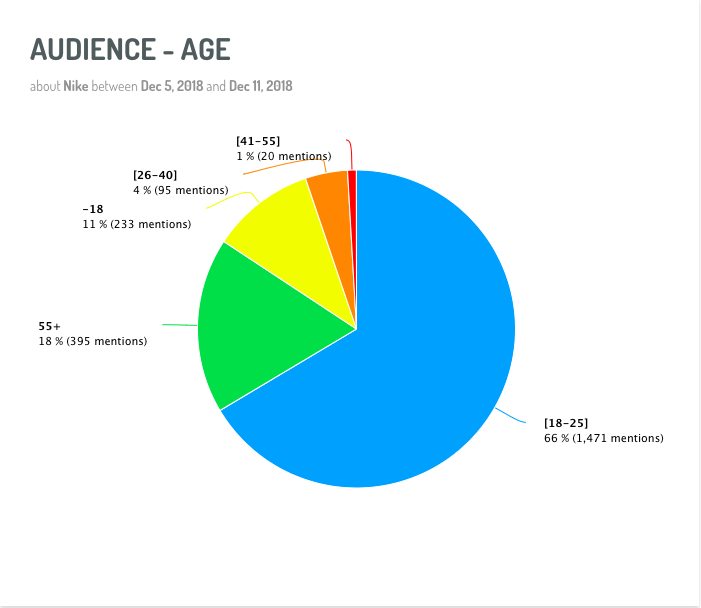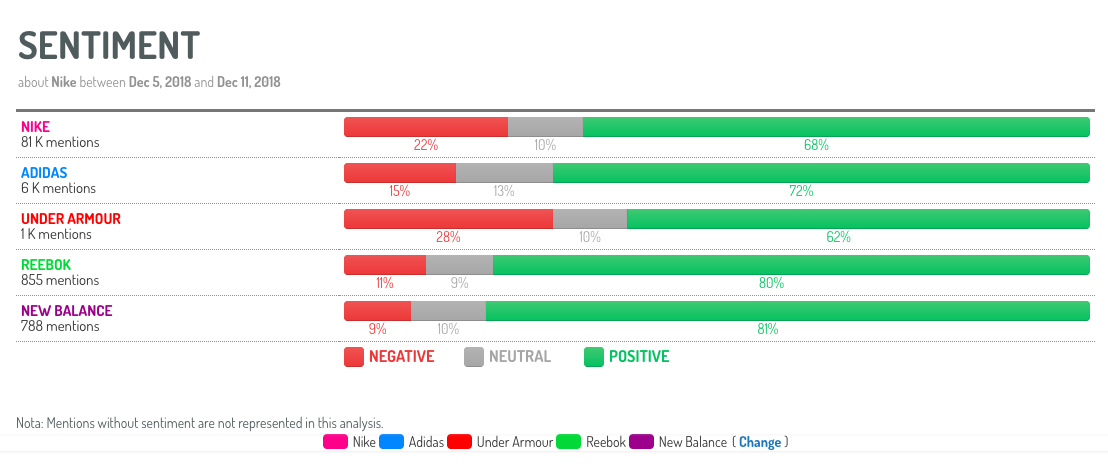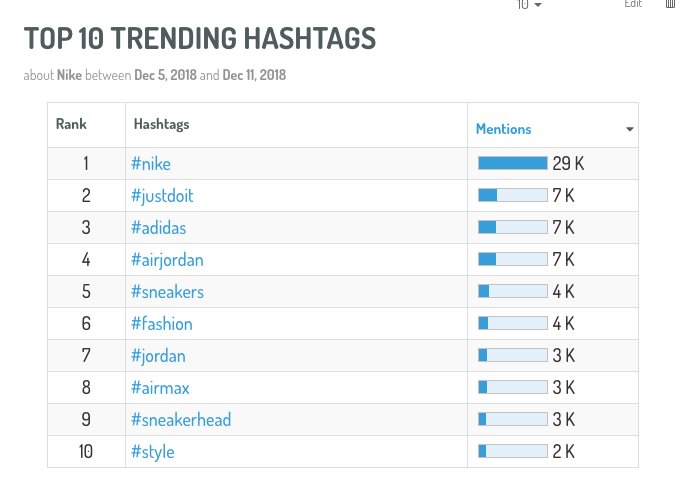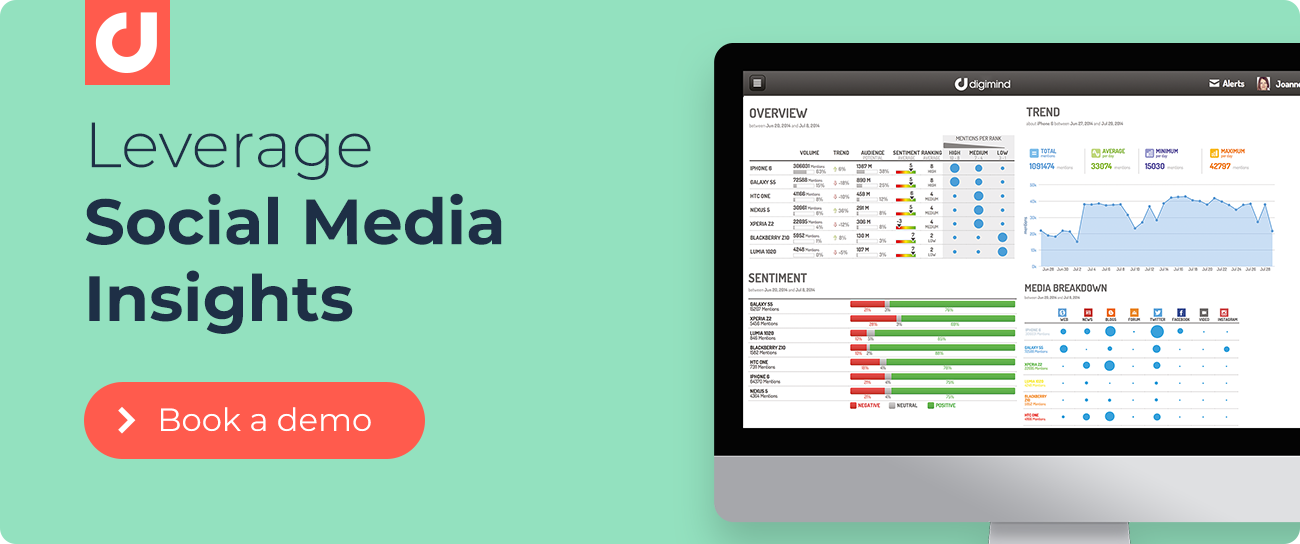What is Social Listening: Definition, Benefits, Top 5 Tools Guide
Hey, you hear that? No? It’s because you’re not using Social Listening! If you were, you’d hear the deafening digital sound of billions of consumers on social media making their voices heard, one tweet or post at a time.
But first, What is Social Listening?
Social listening refers to the process of monitoring and analyzing online conversations and mentions about a brand, product, industry, or any specific topic on social media and other online platforms. The goal of social listening is to gather insights, track sentiment, and understand the opinions of people in real time. These insights gathered about your environment can inform business strategies, improve customer satisfaction, and monitor reputation.
By utilizing Social Listening, you and other marketing professionals can power their strategies and campaigns through data-driven insights, thus providing your brands with a direct means of communication with your valued customers and a leg up in your respective competitive industry.
As a marketer, you must be the ears for your brand, for it alone cannot research the ocean of data that lies under the seas of social media. Depending on you are two highly important facets of your company or agency: reputation and online presence.
- Reputation is very straightforward; it’s the image and feeling that consumers get when they hear your brand’s name and think of its products and/or services
- Online presence is the voice and tone that your business shares with the denizens of the web in order to build your brand and attract new customers
Together they make up the brand’s image, the totality of its credibility and popularity. Without a brand image, your company might as well not exist, as far as the market is concerned, which is why it’s vitally important that you either adopt a social listening approach with all your marketing strategies moving forward (if you don’t already utilize one for social media), or improve the model you’re already using if you’re not getting more results with your online reach, engagement numbers, and overall positive consumer sentiment.
In this guide, you’ll be given a crash course on how to listen to consumers and, in turn, convert them into fans of your brand. So if you’re done listening to us go on and on; let’s begin with...
Hearing Is Believing: How Does Social Listening Work?
The first step for anything is understanding the ins and outs of social listening as a tool. You can’t take full advantage of the process if you don’t know how it actually works.
Social listening can be achieved in a number of ways; the choice among them is through AI-supported software that does the heavy lifting of collecting the data through multiple streams of social media channels and web sources, including blogs, review sites, and podcasts, to name a few!
How does it collect data?
The social listening software is built to identify keywords and phrases, hashtags, and other parameters via a query related to the topic being monitored. The query is constructed to specify the criteria for what data to collect and how to analyze it.
For example, if you are interested in looking at conversations around sustainability on Nike, you would have a query that goes like this, "NIKE" AND ("sustainable" OR "sustainability").
Once the query is set up, the social listening tool will then use it to continuously search for and collect relevant data, which is then categorized, analyzed, and visualized in a meaningful way, such as through charts, graphs, and dashboards that break down everything, including:
- Keyword searches
- Trend analyses
- Audience segmentation
- Influencer identification
- Geo-Social mapping
- Emotional sentiment breakdowns
- Competitors report
- And much, much more!
Overall, this method allows marketing and insights professionals to gain valuable insights into the volume of conversation, sentiment, and specific themes and topics being discussed in real time.
You Might Ask: How Is Social Listening Different From Social Media Monitoring?
It's easy to get confused between the two terminologies, but don't fret – you're not the only one. You are correct in that social listening and social media monitoring are similar; they both involve monitoring and analyzing online conversations on social media and other online platforms.
However, there are key differences between their uses and limitations:
- Scope: Social media monitoring typically focuses on monitoring a brand's own social media accounts and channels, while social listening involves monitoring and analyzing online conversations and mentions about a brand, product, industry, or specific topic, regardless of the source.
-
Data collection: While social media monitoring is usually limited to a brand's social pages, social listening covers a much wider range of sources, including blogs, forums, review sites, and other online platforms.
-
Analysis: Social media monitoring typically involves tracking basic social metrics such as followers, likes, and engagement, while social listening provides a more in-depth analysis of online conversations and mentions, including sentiment, trends, and share of voice.
-
Objectives: Social media monitoring is typically used to track the performance of a brand's social media channels — specific to content and engagement — while social listening is used to gather insights, understand customer opinions and behavior, and inform business and marketing strategies.
In a gist, social media monitoring can be referred to as a subset of social listening and limits its focus to a brand's own social network. In comparison, social listening is classified as a holistic approach to monitoring and analyzing online conversations and mentions pertaining to a brand's overall environment.
Peeling the Layers: The Types of Social Listening Available?
Social listening can be incredibly multi-layered when done extensively. But how do you know the right depth and level suited for your business objectives? Here's a brief breakdown:
-
-
Basic social listening: This type of social listening focuses on monitoring and tracking the volume of online conversations and mentions about a specific brand, product, industry, or topic. It typically involves monitoring metrics such as mentions, sentiment, and reach.
-
Deep social listening: This type of social listening involves a more in-depth analysis of online conversations and mentions, including sentiment, themes, influencer engagement, and customer profiling. The goal is to gain a deeper understanding of customer attitudes, inform business strategies, and improve customer satisfaction.
-
Combined social listening: This type of social listening involves a combination of basic and deep social listening, using a variety of metrics and KPIs to monitor and analyze online conversations. The goal is for brands to grasp a complete understanding of their market and customers, reoptimize brand messaging, and track the impact of marketing campaigns and customer experiences.
-
While each type of social listening has its own unique set of goals and objectives, what most brands want for the most part, is flexibility; brands can choose the type that best meets their needs based on their specific business objectives and the information they are looking to gather.
Let’s Loop It Back To: Why Is Social Listening Important, and How Can It Benefit You?
We've gone through the hows and whats of social listening so far. But you still can't make out why your brand might need a social listening stack on top of all the other marketing and data analytic tools out there. The thing is, there is not just one reason but a handful of key benefits of using AI-powered social media listening to procure insights about your digital landscape.
Here are some game-changing reasons why social listening is the go-to solution for brands:
-
-
Understanding your customers and those of the competition: Brands require relevant insights to tailor their brand messaging to their target customers' values and needs. The only way to stay ahead is if you have data about the competition, whether it's about their customer following or their perceived strengths and weaknesses.
-
Identifying opportunities: By monitoring online conversations and identifying trends, brands can identify new gaps for product development, explore marketing initiatives, and anticipate emerging market trends.
-
Improving customer service: Social listening provides direct communication between brands and their customers, allowing businesses to spot detractors in customer complaints and proactively address and resolve any issues. This can lead to improved customer satisfaction and loyalty.
-
Strengthening your editorial marketing strategy: By monitoring and analyzing online conversations about your products, services, and industry, brands can gain insights into customer preferences and buying behavior and use this feedback to drive content marketing strategy and improve marketing impact.
-
Monitoring your brand reputation and detecting risks: Social listening helps brands to readily monitor their online reputation and alert teams on potential risks, such as negative sentiment, bad buzz, and crises. As negative buzz can inadvertently spark like wildfire, having an automated tool to keep an eye on potential risks will be essential in maintaining a positive online reputation.
-
Why Stopping Short of Social Listening Can Cost You:
On top of these reasons, there are potential risks and threats that your company would likely want to avoid, thereby giving you visibility on red flags, be it from customer complaints or failure to respond to industry developments.
Some specific ways in which social listening can help you avoid these issues include:
-
-
Addressing customer feedback and complaints proactively: Brands can be seen to easily overlook customer issues, failing to take steps to resolve them and thus impacting their brand reputation. A social media monitoring platform that can alert you to negative sentiment will be essential to improving customer satisfaction and loyalty, keeping crises from escalating further.
- Identifying and capitalizing on opportunities for new product/service ideas: Through social listening, you enable an inflow of critical data about your customers' needs, behavior, and pain points. On top of that, social listening topics can be configured to monitor market trends and emerging technologies, informing product development and marketing strategies.
- Making better, informed business decisions based on accurate information: Misunderstandings and misinterpretations can often result from invalid, outdated, or incomplete information. Social listening helps to provide accurate, real-time information about customer sentiment from a wide berth of sources, assuring brands in making informed decisions based on a comprehensive view of customer feedback.
- Leveraging potential partnerships or collaborations with influencers or other businesses: Partnerships can be important for brands to target new markets or customers. Exchanging resources and collaborating with influencers and businesses is a sensible gateway to enter key communities and demographics to improve market share and growth. Social listening can do the legwork of effectively identifying key players and opinion leaders to work with automatically, which gets you to execute your marketing strategies quicker.
- Staying up-to-date on industry trends and developments and changing customer needs: As market trends are in constant flux due to changing customer preferences, having data on the ground about what customers are saying, thinking, and feeling will be valuable for brands to adapt to new industry offerings and weather changing market conditions.
-
Getting Too technical? Let's visualize Social Listening for You
Let’s look at just 3 examples to highlight the power of social media better. For your reference, everything provided below is supplied by the Digimind platform from previous searches, but they are shared here to give you a better comprehension of how a social listening platform can help you and your brand.
There are so many tools you can use that are available on the market, and we discussed 10 of them here in another comprehensive Digimind piece!
1. Target Audience Segmentation - Age Pie Chart
Social Listening can find the age ranges of a large portion of a brand’s consumer base that communicates on social media and can display such data groups in ways that are digestible to anyone, regardless of experience or social media skill.
Taken from a query made in December 2018, the sports and athletic shoe brand Nike had its target audience broken down via a pie chart, giving an accurate depiction of its largest consumer base. With this knowledge, Nike could research content that resonates most with young adults aged 18-25 and cater to their interests and preferences. Or, they could determine that their weakest age group that discussed Nike on social media would need to be focused on in order to balance out their quarterly earnings. Either way, by using social listening, they’ve already gone five steps ahead of their competitors with the help of data-driven insights.
2. Competitive Sentiment Analysis - Athletics Brands
Staying in line with sportswear, this next example showcases a time when a group of companies within the same sports/athletics retail industry were analyzed in order to provide a fuller picture of how they compare to each other when considering consumer emotional sentiments. As you’ll see below, this facet of social listening is key to determining a brand’s overall standing in the market and how best to strategize its next moves for optimal improvement.
With color coding, a brand key, and the negative, neutral, and positive labels all clear as day, this graphic can easily illustrate to anyone how some brands are viewed more favorably than others, and using that information effectively can mean the difference between being second best, or being the 1# brand in your field. Marketing and insights professionals would do well to use data like this to double down on certain content campaigns on social media if they belonged to Under Armour or perhaps keep things fresh with an influencer-brand partnership if they wanted to keep their positive sentiment lead, like New Balance.
3. Trend Tracker - Sports Brand Hashtags
Lastly, this trend tracking assistant can give us a crystal clear snapshot of the top trending hashtags when it comes to Nike and sports. If you notice something big before you finish scanning down to the next paragraph, then you’ve successfully used social listening to come to an important understanding of how this works.
Nike must’ve done something big or impressive (or maybe even been #1 during that period) in December 2018, as the #nike hashtag outperforms the closest mentioned hashtag by 22 K online conversations. This is the power of social listening, and if you’re still reading our guide, you’ll probably want to know the value of it when it comes to your brand specifically. Well, about that...
Hear Them (Consumers) Out!
Consumers aren’t just numbers; they’re real people with real lives like yours who have special wants, dreams, and passions, and make this very clear through the multitude of social media platforms available to them, like Facebook, Twitter, LinkedIn, Instagram, Tik Tok, among many others!
The point is social listening is great for scrutinizing the details and putting customers in boxes, and regimenting them as numbers. Still, one of the most important elements of listening online is truly ENGAGING with consumers on a personal level. Hearing and then responding. Action and reaction. When they see your brand coming down to their level, sympathizing with their problems, and sharing in their stories, then you build something unique in marketing — building connections.
Let’s look at another 3 examples of when brands used social listening to identify opportunities to effectively engage and connect with their target consumer base and thus positively improve their brand image.
1. Starbucks Respects Birthday Girl
Customer service care can come from many places. Still, with the size of social media, it speaks volumes that the official Twitter channel of Starbucks would take time out of its busy tweeting schedule to rectify the issue of an unfulfilled free B-day drink when reached out to.
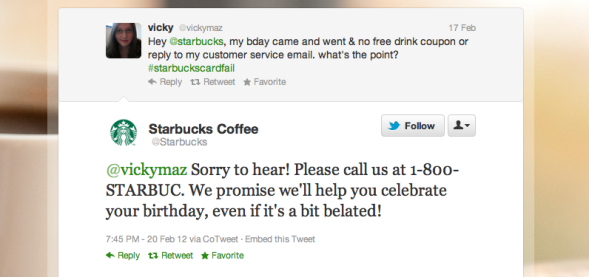
Screenshot Source: jcheema4.wordpress.com
This is a sample where the social listening was operated in real time, obviously, but the fact that Starbucks resolved a customer care issue with such speed (three days between tweets is not too shabby) and devotion is commendable and definitely, a strategy that other brands should adopt in order to ingratiate themselves to people on a human level. That’s what sells coffee. That’s what builds businesses. That’s why Starbucks (among many things) is the #1 coffee chain.
2. Target Cares With Simple Gesture
Even when it’s not a customer care issue, using a conversational, casual human voice when engaging with loyal fans of your brand is a guaranteed way to make your company stand out on social media, if not at least improving the reputation you might have online. This next Twitter exchange between Target and a customer best demonstrates this point with a mutual back-and-forth of goodwill.
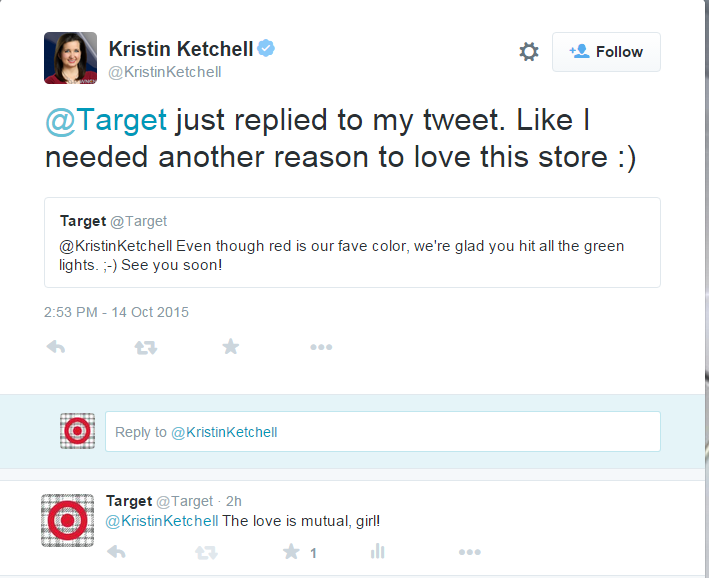
Screenshot Image Source: developer.twitter.com
It’s not every day that the brands we love, share that love back with us, yet when it happens, it can be transformative to those who are on the receiving end, even with those not named Kristen Ketchell, who can vicariously experience this warm exchange through shares and retweets.
3. Campbell’s Chicken Soup Bites Back At Bigot
Not every use of social listening to engage with consumers has to be all warm and fuzzy. Sometimes, it can be in defense of those under attack on social media. Back in 2015, Cambell’s (the soup company) aired a heavily-publicized advertisement on television depicting two dads lovingly feeding their child some Campbell’s Chicken Noodle Soup. The backlash was big, but the love and praise were bigger, and Campbell’s stood by their ad with a humorous but well-meaning series of Facebook responses to people claiming they’d boycott Campbell’s.
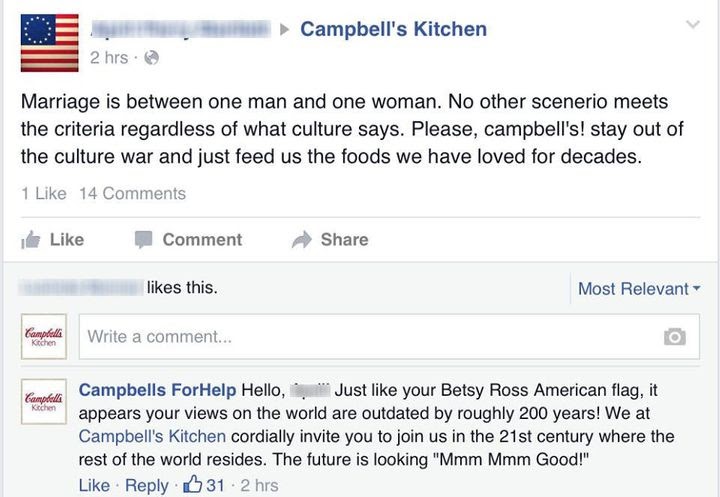
Screenshot Image Source: huffpost.com
By standing up to the negative comments of someone disapproving of their support for LGBTQ+ consumers, they immediately labeled their brand as standing for something and standing for good is always good, especially for corporations that mean what they say.
Social Listening Tools Speak Volumes
So you know what social listening is, and you know now why you need it, but don’t forget that social listening is important for another reason, and that’s to help you develop content specifically for your target audience; content is king!
Let it not be understated how important it is to utilize social listening as a focusing lens for your digital content strategies, taking the tool and letting you shift from listening to sharing. Content can come in many forms, whether it is:
- A video
- An image
- A carousel of slides
- A story
- A GIF or meme
- An interactive experience, like a game or app
- A promotion or exclusive offer
- And a plethora of other mediums
To curate your content, you’ll need to focus on a few key elements of social listening. These include:
-
-
Emotional sentiments
-
Trend tracking
-
Conversation monitoring
-
The first will give you a basis for what – at the time of developing your content early on – to use as influence and what to avoid as material. The second will keep your team abreast of what is trending at the time and what sorts of cultural norms, ideas, and fads are influencing the general psychology of the online community. Lastly, the third will allow you to read posts and glean insights from the direct conversations people are having on social media, thus offering you a window into their mind space and a world of preferences.
Once you’ve created content and shared it with your key consumer base, then your job becomes managing the feedback you get from such responses and tweaking it in the coming days, weeks, and months in order to guarantee a successful content campaign.
Breakdown of the Top Social Listening Tools
1. Digimind Social

Creation: 1998
Company size: 200+
Customer Service: Yes
Prices: Subscription
Services offered: Brand reputation, Competitive Intelligence, Industry Benchmark, Consumer Insights, Influencer Identification, Trend Detection, Campaign Analysis, API Integrations, Analysis of Owned and Earned Media, Unlimited Custom Dashboards, Report Generation, Automatic Alerts, Mulit-language Support, Sentiment Analysis, Historical Search Data, Advanced Security, Insights Lab, and Consulting Services.
Digimind is a globally recognized social media listening tool with over twenty years of experience supporting many leading companies and agencies with a comprehensive suite of social media monitoring and analytics services. Ranked by the Forrester Report as a "Strong Performer" in the 2020 Social Listening Platforms Report,
Digimind Social is a market leader in high-end social media intelligence software that has impacted brands like McDonald's, L'Oreal, Canon, Audi, Nike, and many more. Whether it's segmenting target audiences based on demographics, analyzing overall brand reputation, discovering the most relevant hashtags for a campaign, or performing in-depth competitive benchmarks, Digimind exemplifies what social media monitoring and analytics tools should attempt to replicate while growing as a platform with new features and integrations on a regular basis. With its advanced security measures, including secure data storage and privacy controls, Digimind Social is a secure choice for brands of all sizes that want to control sensitive data.
Digimind Social – being at the forefront of sentiment analysis in social listening – has an advanced sentiment analysis capability to process how people feel about a brand's brand, product, or industry. The platform uses natural language processing (NLP) and machine learning algorithms to accurately classify online posts as positive, negative, or neutral for brands to receive dynamic real-time insights.
Website: https://www.digimind.com/en/
2. Hootsuite
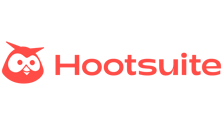
Creation: 2008
Company size: 1000+
Customer Service: Yes
Prices: Subscription (free and paid)
Services offered: Social Media Scheduling, Social Media Monitoring, Social Commerce, Social Media Advertising, Analytics and Reporting, Team Management, Integrations
Hootsuite is a leading social listening tool globally due to its comprehensive support for over 35 social media platforms, advanced analytics and reporting features, customizable dashboards, collaboration and team management capabilities, and integration with other tools such as CRMs, marketing automation platforms, and analytics tools.
Hootsuite's platform provides businesses with a wide view of their social media presence and allows them to monitor conversations on multiple platforms. The in-depth analytics and reporting features enable businesses to track the performance of their social media campaigns, understand their audience, and measure the impact of their social media efforts. Its social media management features offer collaboration between team members, enabling users to assign tasks, manage approvals, and monitor the performance of their social media teams, streamlining their social media processes for better efficiency.
Website: https://www.hootsuite.com/
5. Mention

Creation: 2012
Company size: 50+
Customer Service: Yes
Prices: Subscription
Services offered: Real-time monitoring, Advanced analytics, Customizable alerts, Multi-language support, Collaboration tools, Integrations, Mobile app
Mention is a well-regarded social listening tool for its real-time monitoring capabilities, advanced analytics, customizable alerts, multi-language support, and integrations with other tools. With real-time monitoring across multiple platforms, businesses can track their brand reputation and respond to customer inquiries as they happen. Advanced analytics and reporting features provide businesses with insights into their social media performance, including metrics such as engagement rates, sentiment analysis, and audience demographics. Customizable alerts come standard as in other social listening tools, making it easy to stay informed about specific mentions and hashtags related to the brand.
Website: https://mention.com/en/
Finding A Social Listening Tool that Works for You
Choosing a social listening tool can sometimes be difficult, where the offerings between the top social listening platforms are similar. It is important, however, to grasp that not all social listening tools can do what they promise – limited by the constant regulations to do with data privacy and security.
Critically, to determine whether a social listening tool will be suited for you, consider the following factors:
-
-
Your goals: What are you hoping to achieve through social listening? Are you looking to improve your online reputation, monitor brand mentions, or track customer sentiment about your products or services? Knowing your goals will help you choose a tool that meets your specific needs.
-
Platform coverage: Does the tool cover the social media platforms that are most important to your business? Ensure the tool you choose covers the platforms where your target audience is active.
-
Features: Does the tool have the features you need to achieve your goals? Consider features such as sentiment analysis, reporting and analytics, social media management, and customer support when choosing a tool.
-
Ease of use: Is the tool user-friendly and easy to navigate? Who are your end users? A tool with a user-friendly interface will make it easier for you to monitor and manage your social media presence. If you decide to outsource your insights reporting, does the social listening company offer such services?
-
Integration: Does the tool integrate with your other tools and systems, such as your CRM or marketing automation platform? Integrating your social listening tool with other tools will help you streamline your workflows and get the most out of the tool.
-
Cost: Finally, if not the most important factor, what is the cost of the tool, and does it fit within your budget? Consider the cost of the tool and the value it provides when making your decision.
-
Marketing In The Hear And Now
Everyone likes to talk and hear themselves speak. Nobody likes to be the listener. Well, when it comes to marketing and insights professionals, you need to balance the responsibilities of both, but that can only take place when you start things off by listening. Hear what your loyal customers, and soon-to-be customers, have to say, and then formulate your next steps with those insights at your disposal. Social listening is one of the most important tools in your toolbox, one of the most reliable weapons in your arsenal, and one of the best… well, you get the idea. Don’t leave the house without it; never start a marketing campaign without first taking advantage of it because if you don’t, your competitors will.
Written by Micah Levin
With a background in creative writing, advertising, and psychology, Micah is a copywriter in name and a Digiminder at heart. When he's not developing content for agencies, you can find him crafting novels, cooking and running around in Brooklyn, NY.



